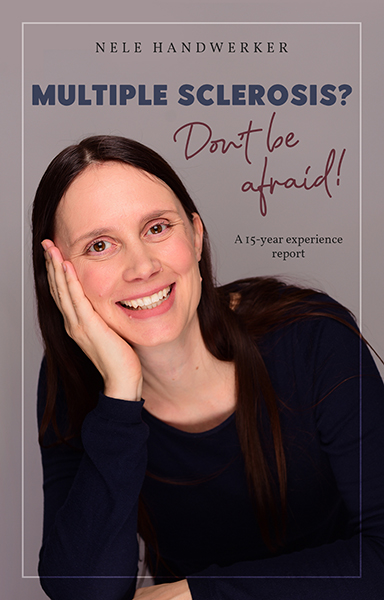Episode 47 is about the symptom of spasticity. A good two thirds of all people with multiple sclerosis have to deal with spasticity over the years. Some only experience it temporarily, others struggle with it permanently.
Fortunately, the consequences of spasmodic muscles can usually be treated well and there are many treatment options available.
Klicken Sie auf den unteren Button, um den Podcast zu laden.
Table of Contents
When do spasms occur?
Spasticity usually only occurs later in the course of the disease. However, they can appear earlier, e.g. in the form of bladder disorders or spastic limbs.
These symptoms usually subside once the relapse has subsided and only become apparent when the body temporarily heats up (Uhthoff phenomenon), due to summer temperatures, a visit to the sauna or fever. However, psychological tensions such as sadness, anger, stress and anxiety can also intensify spasticity or cause it to flare up again. If you are very tired, suffer from severe pain, have problems with your digestion or urination or a new relapse occurs, spasticity can also be intensified.
It is therefore particularly important that you stop or at least slow down multiple sclerosis as early as possible. Scientific studies worldwide show that disease-modifying therapy is a very important component of this. You can find out more in the following Brain Health report. After all, if you can avoid getting to the point where you have permanent spasticity in the first place, this is of course the best option.
What types of spasticity are there?
Spasticity primarily affects the muscles. All areas of the body can be impacted, from the arms and fingers to the legs, feet, hips and back.
The muscles are very tense due to inflammation of the nerve tissue in the pyramidal tract. This can cause the muscles to:
- cramp,
- shorten,
- stiffen,
- become paralyzed.
The altered muscle tension often causes pain and restricts everyday life, depending on which muscles are affected. If arms and hands are spastic, it is difficult to grasp and hold a cup, but also to close small buttons and write.
If the spasticity affects the legs and feet, walking becomes more difficult, but the risk of falling also increases. Balance can also be affected, as spasticity often occurs on one side.
In addition, nocturnal spasticity can prevent restful sleep and thus worsen your fatigue. Restrictions with the bladder, bowel, sexual desire and sensitivity are also possible.
How are spasms treated?
The therapy aims to minimize the damage caused by the spasticity in order to improve your quality of life. Fine motor skills are often trained so that you are better able to cope with everyday life without help. If you are less mobile, the focus is on reversing this process.
Depending on the intensity of the spasticity, you can seek professional help from a physiotherapist. Specific exercises can be used to make stiff muscles flexible again. Ideally, you should also exercise independently at home.
Many MS patients do very well with hippotherapy. This is a special type of riding and is good for loosening up spastic legs.
However, if the spasticity is still at a mild level, you should always inform your neurologist. Together you can decide to what extent you can help yourself or whether support would be good.
In general, exercise is good for your tense muscles. This could be endurance sports such as swimming, cycling, jogging or Nordic walking. But maybe you also like yoga, Pilates or dancing. The main thing is that you enjoy it, warm up your muscles and exercise regularly.
If you feel better with guided movements, sports equipment such as a rowing machine or cycle ergometer may be more suitable for you.
Talk to your national MS patient organization about this. Many offer special courses, some of which can be done online. In presence you also have the advantage of social interaction.
What aids and medication are available?
Depending on whether you need loosening, relief, stretching or support, you can use special splints or braces to provide relief.
If you need to be treated with medication, you will need a little patience, as there is no general dose recommendation, but rather an individual adjustment to your needs. Several active substances are available – antispastic drugs, Botox, cannabinoid-containing medication and, in rare cases, cortisone. Your neurologist is the specialist here. Let her advise you.
In the case of severe spasticity, a medication pump can also be permanently inserted into your lower abdomen using a minimally invasive technique, which releases the active substance directly into the spinal canal. Direct local delivery means that significantly lower doses of the medication can be administered, just one hundredth to one thousandth of the amount required orally. This can greatly reduce side effects.
What can you do during the relapse?
Spasms often get worse during a relapse, even if they are not part of the new symptoms. Try to stay as calm as possible. If it makes sense, your doctor will treat the relapse with cortisone or second-line therapy. This is always a matter of judgment and the limitations caused by the relapse.
Yoga, Feldenkrais and all other types of gentle stretches are good. Talk to your physiotherapist, if you have one, and get specific tips on how you can best support your body. And take care of your mind, it can make an important contribution to helping you feel better again more quickly.
And if spasticity remains permanently?
Exercise. Exercise. Exercise.
It is very important that you move as much as possible to counteract stiffness and restrictions in your muscles. Exercise regularly, preferably every day, and make use of the support options listed above.
What is the best prevention against spasticity?
Even if I repeat myself: a functioning disease-modifying therapy paired with a healthy lifestyle, loving people around you who are good for you and as little harmful stress as possible. You can find out more about healthy eating in the episode with Mireia Sospedra.
Food for thought
Document your muscle cramps in a journal:
- When do they occur?
- At what intensity?
- How long do they last?
- Which part of the body is affected?
- Are there any triggers?
- What helps you – exercise, meditation,…?
It’s best to ask your neurologist and physiotherapist exactly what information will help them to make an accurate diagnosis and develop an optimal therapy. And very importantly, address problems early on. Sometimes there may be other triggers, in which case you can clarify this. But the sooner your medical support team knows, the earlier they can help you.
Incidentally, the books by Jorge Bucay „Let Me Tell You a Story: Tales Along the Road to Happiness“ and B.K.S. Iyengar „Iyengar Yoga for Beginners“ helped me a lot to relax mentally and physically.
Have you ever had problems with spasticity or are you permanently affected by it?
See you soon and try to make the best out of your life,
Nele
For more information and positive thoughts, subscribe to my newsletter for free.
Click here for an overview of all podcast episodes published so far.

And at many more places.
* This text contains affiliate links. This means that I get a small compensation if you buy the product recommended by me through the link. For you nothing changes in the price of the product. And it helps me to pay for the blog and to write new posts.










